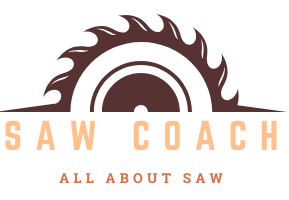Woodworkers often encounter challenging scenarios involving brad nails embedded in wood, raising critical questions about table saw capabilities and safety. Cutting through brad nails requires careful consideration of blade type, nail composition, and potential equipment damage. While technically possible, the process involves significant risks that demand precise techniques, specialized equipment, and comprehensive understanding of material interactions and tool performance.
What Happens When Table Saw Meets Brad Nails?
Table saws can technically cut through brad nails, but the operation is fraught with potential complications. The interaction between saw blade and metal fasteners depends on multiple factors:
Blade Vulnerability and Performance Factors
| Nail Characteristic | Impact on Cutting Performance |
|---|---|
| Nail Gauge | Thicker nails cause more blade damage |
| Nail Material | Hardened steel increases cutting difficulty |
| Blade Type | Specialized construction blades recommended |
Critical Considerations Before Cutting
- Blade Protection
- Use sacrificial or inexpensive blades
- Choose blades with higher tooth count
-
Minimize potential damage to premium saw blades
-
Safety Precautions
- Wear comprehensive protective gear
- Inspect wood for nail locations
- Remove nails when possible
- Maintain slow, controlled cutting speed
How Do Different Brad Nail Types Affect Cutting?

Brad nails vary significantly in composition and potential impact on table saw blades. Understanding these variations helps woodworkers make informed decisions:
Nail Gauge Comparison
- 18-Gauge Nails
- Thinner profile
- Less potential for blade damage
-
Easier to cut through
-
16-Gauge Nails
- Thicker construction
- Higher risk of blade wear
- More likely to cause sparking
What Techniques Minimize Blade Damage?
Experienced woodworkers recommend several strategic approaches to mitigate risks:
Preparation Strategies
- Utilize metal detectors to locate hidden nails
- Mark nail positions with bright paint
- Use magnetic nail pullers
- Invest in specialized nail-cutting blades
Cutting Technique Recommendations
- Reduce cutting speed dramatically
- Apply minimal pressure
- Use carbide-tipped blades designed for nail encounters
- Consider alternative cutting methods for nail-laden materials
What Are the Potential Consequences of Cutting Nails?
Understanding potential outcomes helps woodworkers make informed decisions:
Blade Damage Scenarios
- Minor Damage
- Slight tooth dulling
- Reduced cutting precision
-
Minimal performance impact
-
Significant Damage
- Carbide tip chipping
- Blade replacement required
- Potential safety hazards
Expert Recommendations
Professional woodworkers universally advise:
– Prioritize blade and personal safety
– Remove nails whenever possible
– Use dedicated nail-cutting blades
– Replace blades frequently when encountering metal fasteners
When to Avoid Cutting Nails
- Expensive or precision blades
- Critical woodworking projects
- When alternative removal methods exist
Technical Insights
The metallurgical interaction between saw blade and brad nails creates complex stress dynamics. Carbide-tipped blades with specialized tooth geometry provide the most reliable performance when inadvertently encountering metal fasteners.
Recommended Equipment
- Construction-grade saw blades
- Nail-cutting specialized blades
- Protective eyewear
- Face shields
- Metal detection tools
Final Guidance
While table saws can technically cut through brad nails, the practice is not recommended without comprehensive preparation and understanding of potential risks. Prioritize safety, blade preservation, and precision in your woodworking approach.
Reference:
– BobIsTheOilGuy Discussion
– Woodworking Talk Forum
– Fine Woodworking Insights
